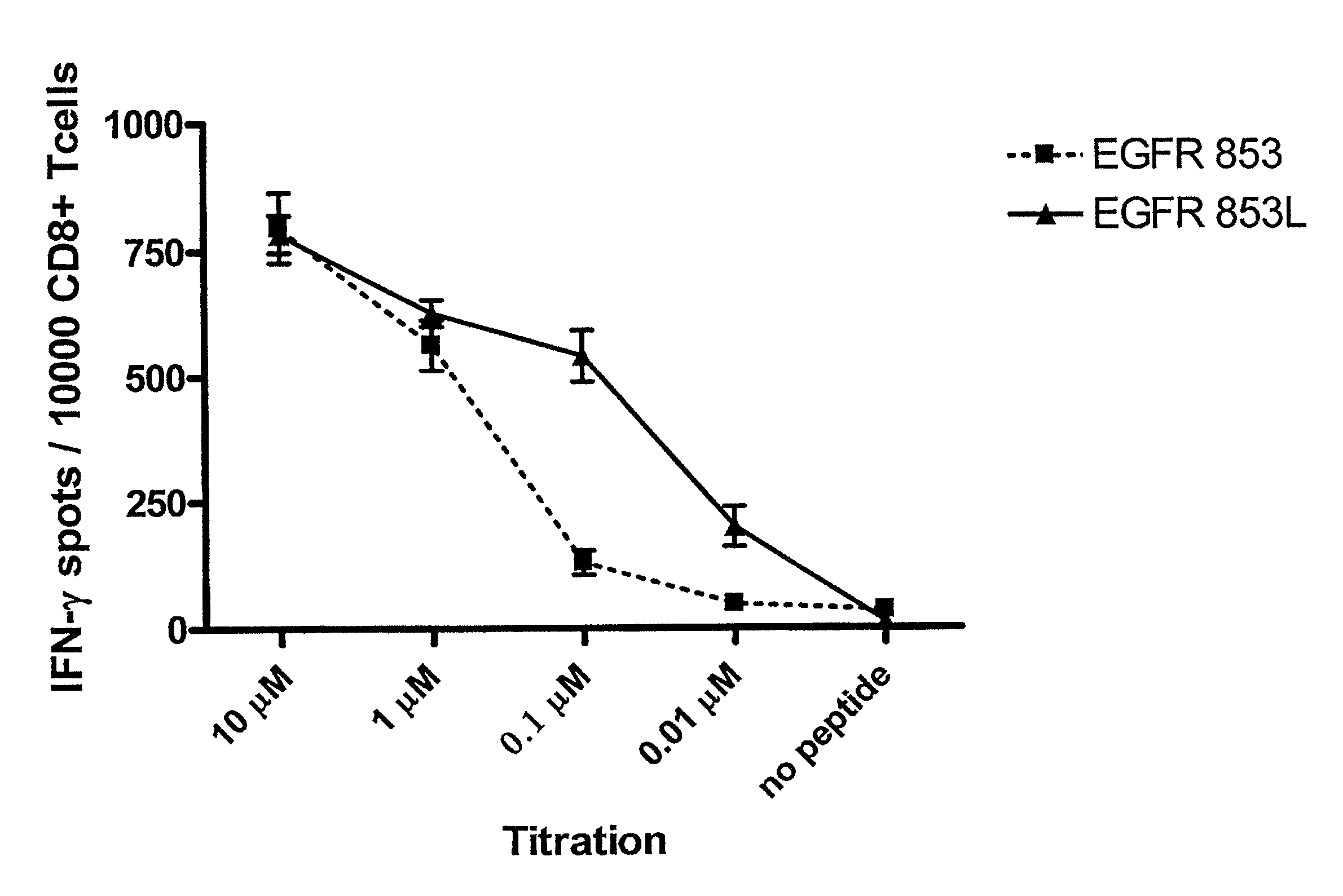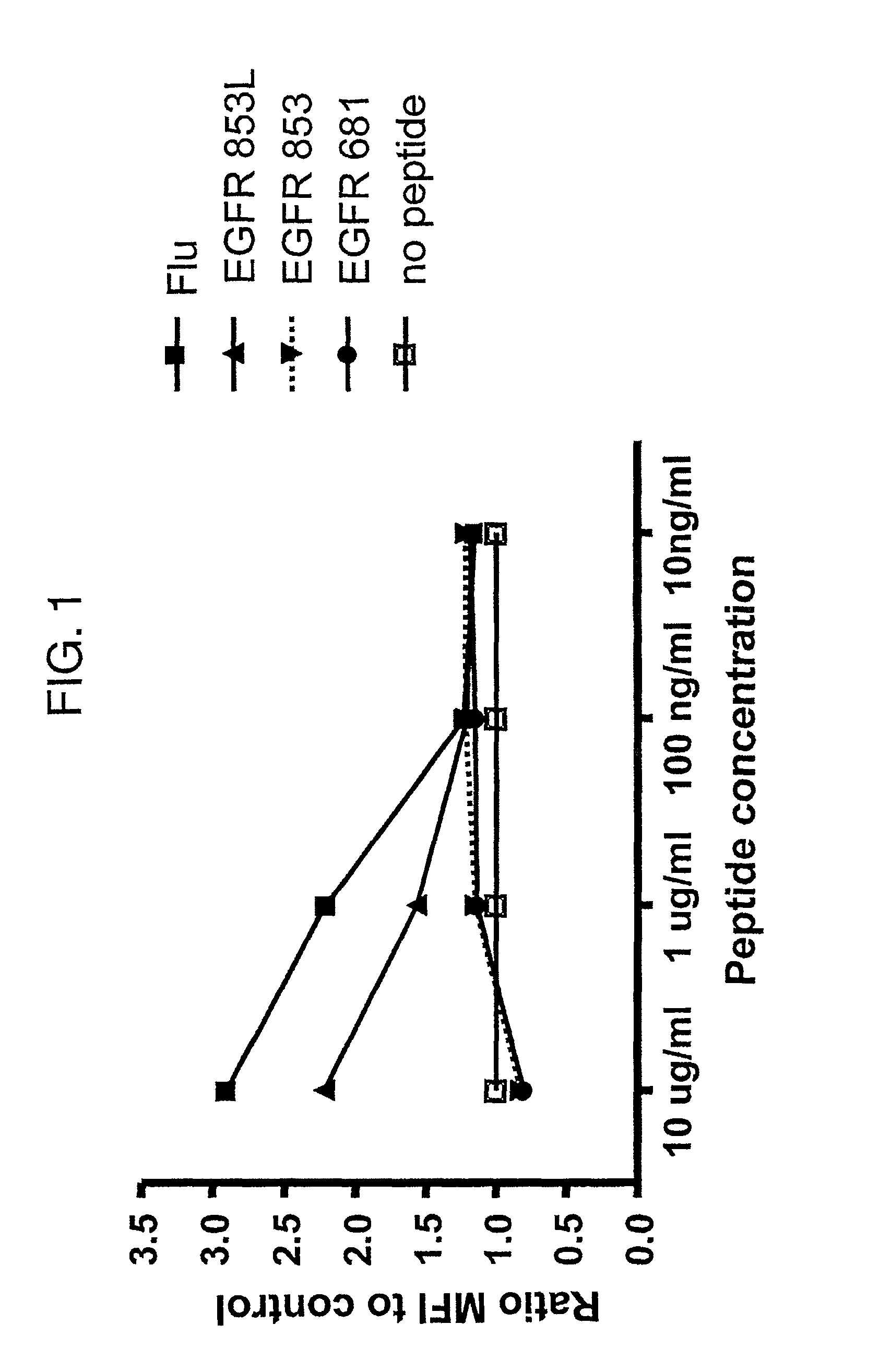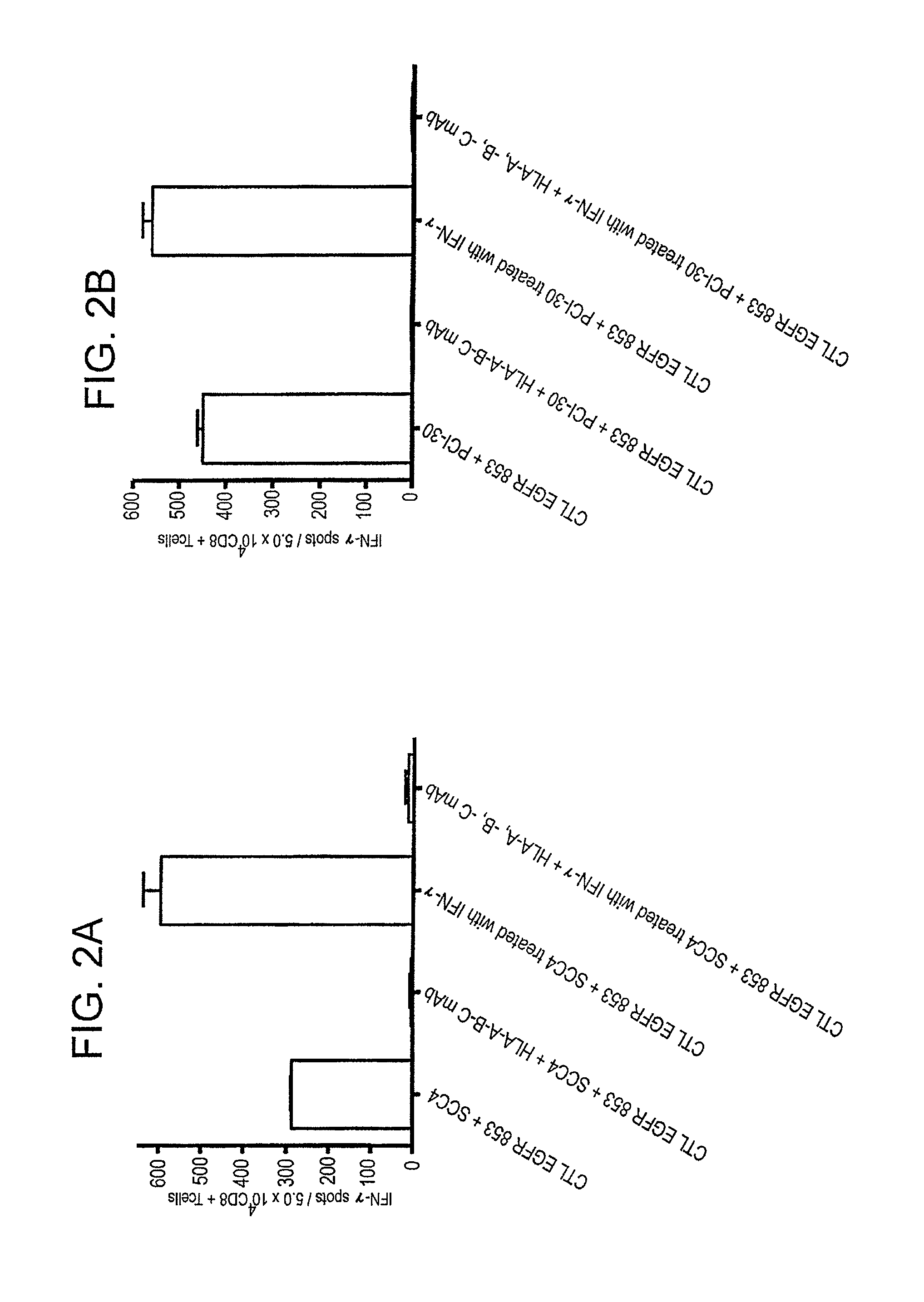Cytotoxic T cell defined EGFR peptide and an optimized derivative peptide
a technology of cytotoxic t cells and derivatives, which is applied in the direction of peptide/protein ingredients, depsipeptides, phosphorus compounds, etc., can solve the problem that many individuals do not respond to treatmen
- Summary
- Abstract
- Description
- Claims
- Application Information
AI Technical Summary
Benefits of technology
Problems solved by technology
Method used
Image
Examples
example 1
[0070]This example demonstrates the generation of the polypeptide of the invention.
[0071]Two polypeptides having a sequence of amino acids consisting of IXDFGLAKL (SEQ ID NO: 1) were synthesized using standard F-moc chemistry by the University of Pittsburgh Peptide Synthesis Facility. One polypeptide had a leucine at position 2 of SEQ ID NO: 1 and the other had a threonine at position 2 of SEQ ID NO: 1. The polypeptides were substantially pure, in that they were >90% pure as indicated by analytical HPLC and were validated by mass spectrometry. Lyophilized polypeptides were dissolved in 100% DMSO at a concentration of 2 mg / ml and stored at −20° C. until use.
[0072]It is interesting to note that EGFR853-861 (i.e., SEQ ID NO: 1, wherein the residue at position 2 is threonine) shares identity with a HER-2 peptide that binds HLA-A*0201 and has demonstrated immunogenicity. In particular, EGFR853-861 differs from the HER2861-869 sequence at position 868.
example 2
[0073]This example describes a polypeptide-induced stabilization assay.
[0074]The polypeptide-induced stabilization assay of the HLA-A*0201 class I molecule expressed by the T2 cell line (a human T cell leukemia / B cell line hybrid) was performed using methods known in the art. Briefly, 5×105 T2 cells were incubated in the presence of 10-fold dilutions of polypeptide (i.e., EGFR853-861, EGFR853-861L, HER2861-869, Flu58-66, or EGFR681-689) in AIM-V medium for 18 hours at 37° C. Surface HLA-A*0201 molecule expression was detected using the anti-HLA-A, -B, -C (W6 / 32) or anti-HLA-A2 mAb (BB7.2). After incubation with a FITC-conjugated secondary mAb, T2 cells were analyzed by flow cytometry using a FACScan (BD Biosciences).
[0075]The results of the experiment are set forth in FIG. 1.
example 3
[0076]This example demonstrates the immunogenicity of the inventive polypeptide.
[0077]In vitro stimulation (IVS) was performed using EGFR853-861 (i.e., SEQ ID NO: 1, wherein the residue at position 2 is threonine) or EGFR853-861L (i.e., SEQ ID NO: 1, wherein the residue at position 2 is leucine) to induce cytotoxic T lymphocytes (CTL) using CD8+PBMC from five HLA-A*0201+ healthy donors and one head and neck squamous cell carcinoma (SCCHN) patient. The resulting EGFR-specific CTL were tested for EGFR853-861 specificity and HLA class I antigen restriction using polypeptide pulsed T2 cells. CTL generated against EGFR853-861 polypeptide recognized T2 cells pulsed with either EGFR853-861 or EGFR853-861L polypeptide, but not T2 cells alone or T2 cells incubated with the HIV Pol476-484 polypeptide (10 μg / ml at 37° C.) (see FIGS. 6A and 6B). This CTL recognition of T2 cells, which only express HLA-A2 molecules, was blocked by incubation with the anti-HLA-A, -B, —C mAb W6 / 32 and the anti-HLA...
PUM
| Property | Measurement | Unit |
|---|---|---|
| weight | aaaaa | aaaaa |
| weight | aaaaa | aaaaa |
| weight | aaaaa | aaaaa |
Abstract
Description
Claims
Application Information
 Login to View More
Login to View More - R&D Engineer
- R&D Manager
- IP Professional
- Industry Leading Data Capabilities
- Powerful AI technology
- Patent DNA Extraction
Browse by: Latest US Patents, China's latest patents, Technical Efficacy Thesaurus, Application Domain, Technology Topic, Popular Technical Reports.
© 2024 PatSnap. All rights reserved.Legal|Privacy policy|Modern Slavery Act Transparency Statement|Sitemap|About US| Contact US: help@patsnap.com










